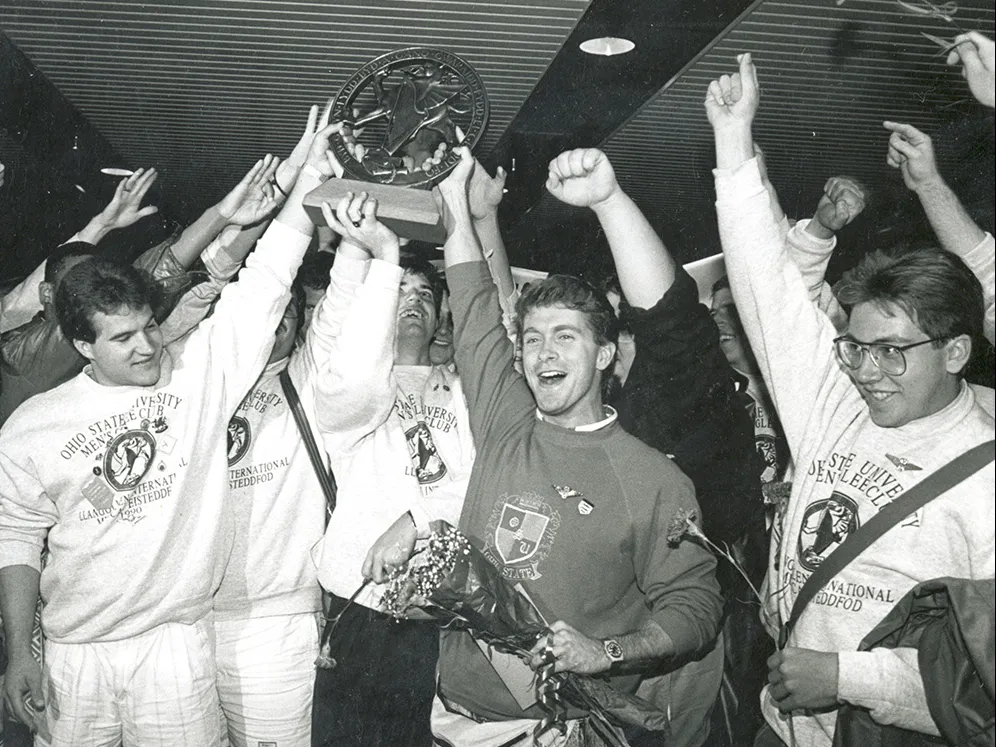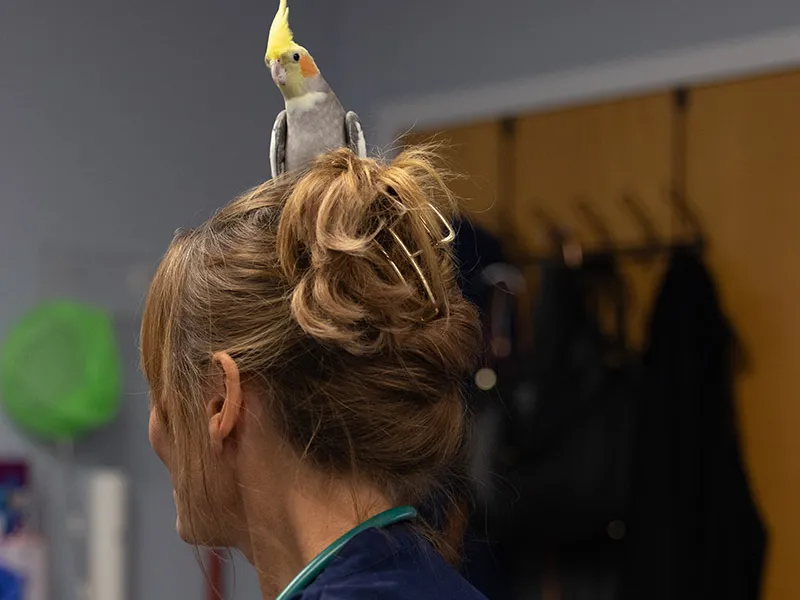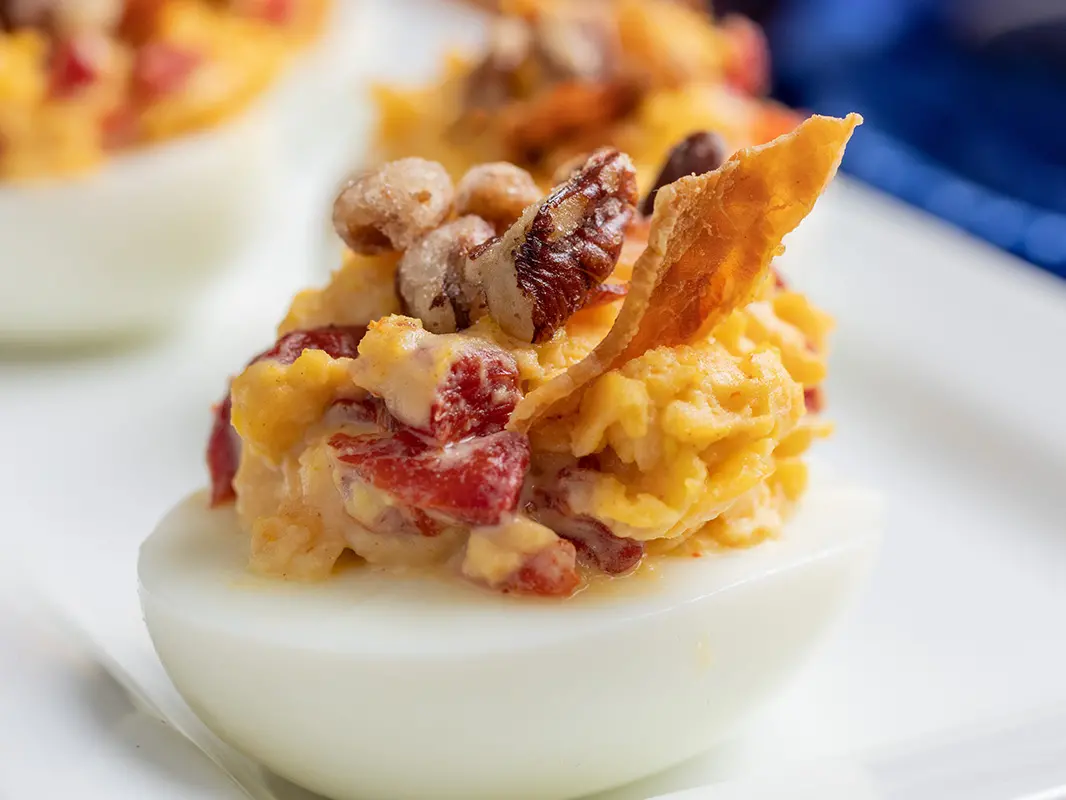3 recipes to try: ‘MasterChef’ alum’s cake, soup, rice
Prostate cancer survivor Chris Walinski ’89 DDS goes from TV chef to do-gooder with nonprofit aimed at building good health.
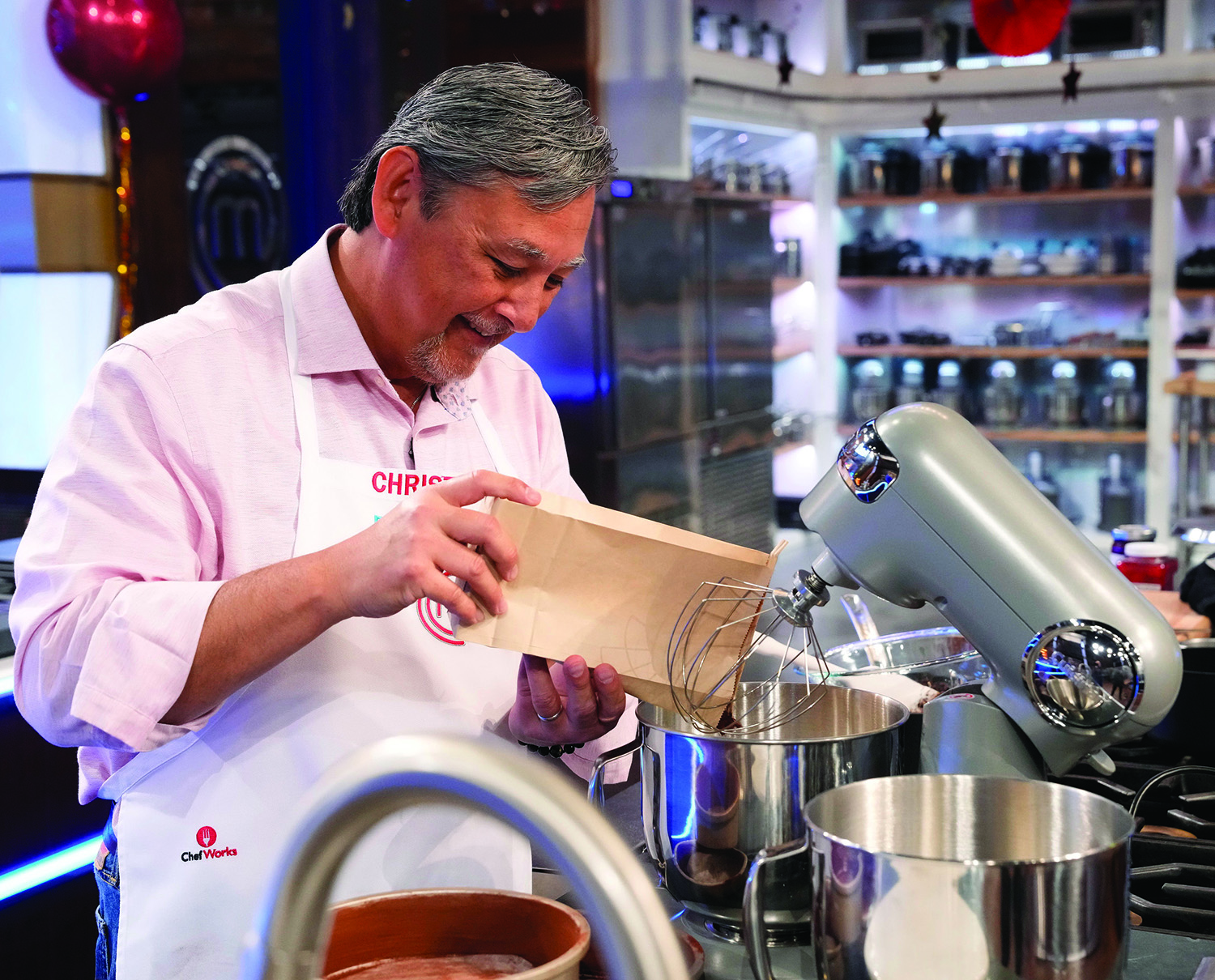
Chris Walinski ’89 DDS wowed the irascible Gordon Ramsay with a diner-ready Black Forest cake one day and another, dismayed him with a raw—so very raw—chicken thigh. So goes life as a contestant on the 14th season of the reality TV show “MasterChef.” But Walinski is leveraging his moment in the spotlight into something with the potential to save lives.
As viewers learned on the audition episode, Walinski is a prostate cancer survivor who’d been diagnosed about a year before. When the show started taping, his hair had grown back after six months of chemotherapy, and he was feeling better. He wasn’t like some of the contestants, hoping to launch a food-focused career out of the experience. But he knew he had an opportunity. “How can I maximize my time here? This is the perfect vehicle for awareness and education,” Walinski says.
He credits the prostate-specific antigen, or PSA, test with finally leading to his diagnosis after months of unexplained hip and back pain. Now, with the notoriety of “MasterChef” on his side, he’s launched the 1,000 Cranes Project, a nonprofit dedicated to raising awareness and promoting healthy habits.
Why cranes? In Japanese culture, cranes are symbolic of long life.
“This was the perfect vehicle for awareness and education. Men have the same potential for prostate cancer as women do for breast cancer, but no one talks about prostate cancer,” the 59-year-old dentist says. “Even men know women need mammograms, but men don’t know they need to get their PSA checked.”
Walinski has been cooking since he was a latchkey kid and needed to prepare his own breakfast and after-school snacks. These days he cooks foods from around the globe, including Japan, Thailand, China, Italy and the Mediterranean. He revels in using fresh herbs and has been delighted to learn that the lycopene in tomatoes, which he also loves to cook with, may play a role in preventing prostate cancer. Studies point to cruciferous vegetables—think broccoli and cauliflower—and high-fiber foods as having potential preventative punch.
He shares some favorite healthy recipes below—Roasted Tomato Soup and Gomoku Rice. But that Black Forest cake he made on “MasterChef”? Not a health food. “I called it the Forbidden Cake,” he says. “The idea was you had to re-create a birthday cake from your past. When I was a kid, they’d have this beautiful Black Forest cake, which I couldn’t have a piece of because it’s got alcohol in it. That was some magnificent-looking cake.”
Up for the challenge?
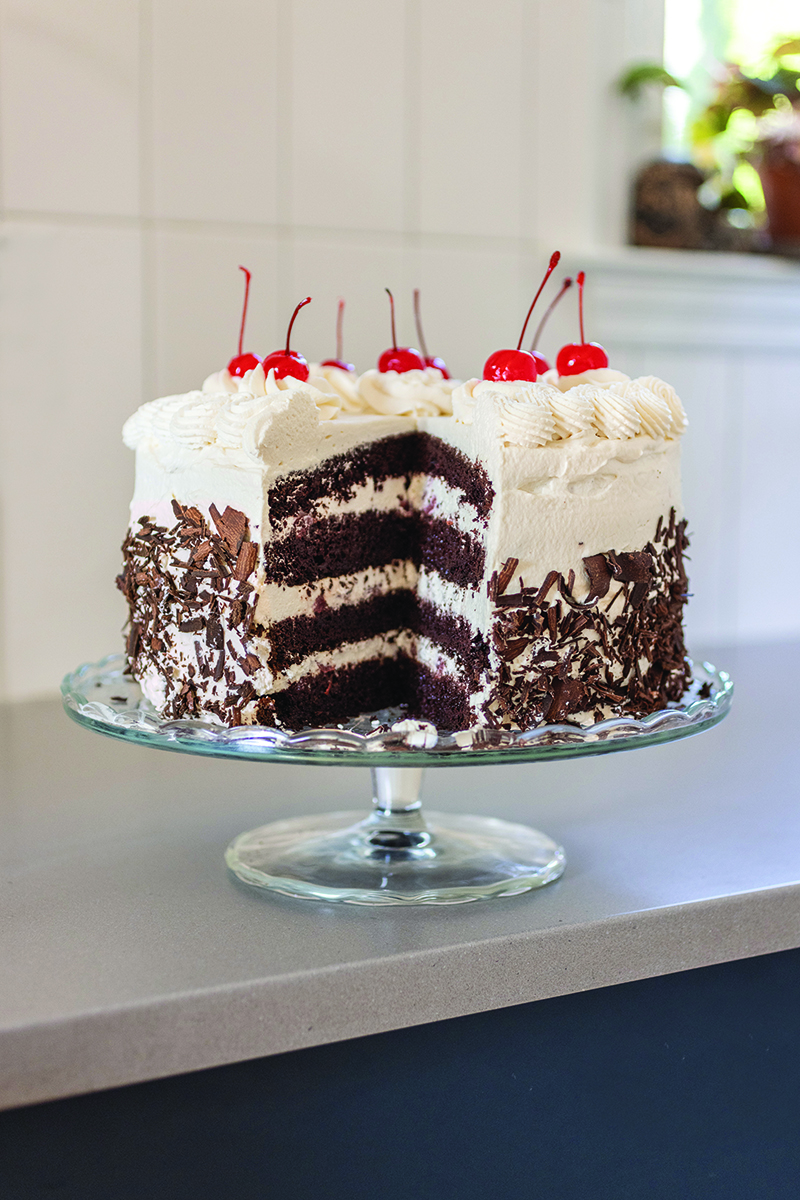
Chris Walinski’s Forbidden Cake
Ingredients
2 cups all-purpose flour
2 cups sugar
1 cup unsweetened cocoa powder
2 tsp. baking soda
1 tsp. baking powder
1 tsp. salt
8 oz. chocolate, melted
1/2 cup vegetable oil
1 cup milk, room temperature
1 cup hot water
2 tbsp. espresso
4 large eggs
1 tsp. vanilla
2 tsp. cherry liqueur (such as Cherry Heering, Luxardo or traditional kirsch)
1 can pitted tart or sour cherries in light syrup
Cherry Liqueur Syrup
1/4 cup sugar
1/2 cup water
1/2 cup cherry liqueur
Whipped Cream Frosting
3 cups heavy whipping cream
1/2 cup powdered sugar
Vanilla, to taste
Garnish
12 maraschino cherries
1 cup chocolate shavings
Directions
Preheat oven to 350 F. Grease three 8- or 9-inch round cake pans, line the bottoms with parchment paper and dust with cocoa powder. Set aside.
To the bowl of a stand mixer fitted with the paddle attachment, add the flour, sugar, cocoa powder, baking soda, baking powder and salt. Stir to combine on low speed.
In a separate large mixing bowl, using a hand mixer, whisk the eggs with the oil, milk, espresso, vanilla, liqueur and melted chocolate. Once combined, slowly whisk in the hot water, taking care not to cook the eggs. You can pass this mixture through a fine-mesh sieve to get rid of any lumps, but it’s not necessary.
Add wet ingredients to the stand mixer bowl and mix on medium speed for 2 to 3 minutes. The batter will be thin.
Divide the batter evenly among the three pans. Bake for 25 to 30 minutes or until a cake tester, toothpick or thin skewer inserted into the center of the cakes comes out clean.
Cool 10 minutes in the pans, then invert onto a wire rack to cool completely.
Meanwhile, make the cherry liqueur syrup. In a small saucepan over medium heat, combine the sugar and water and stir to bring to a boil. Simmer for 1 minute, remove from heat and stir in cherry liqueur. Add the canned cherries. Set aside to cool.
Make the whipped cream frosting when you are ready to assemble the cake. To a very cold mixing bowl, preferably metal, add the cream and sugar and whip until stiff peaks form. Flavor with vanilla to taste if you like.
Assemble the cake. Pro tip: Place a dollop of frosting on the platter or cake board before you place the first cake layer; this helps keep the cake in place while you decorate. Top the first cake layer with about 3/4 cup of cherries and brush generously with the cooled cherry syrup to moisten the sponge. Top with about 1 cup of whipped cream and spread evenly across the layer. Repeat with remaining layers. When finished, frost the sides and top of the cake. You can go for a simple or more decorative look, piping rosettes like Walinski did. Garnish the cake with the maraschino cherries. Decorate the sides of the cake with the chocolate shavings. Transfer to a cake stand as needed and chill before serving.
Gomoku Rice
“Gomoku” means “five ingredients,” but Walinski says he’s taken liberties and added a few more. Walinski’s mother was Japanese; he loves Japanese food and draws from that part of his heritage for this recipe.
Ingredients
1 1/2 cups uncooked Japanese short-grain white rice
4-inch piece gobo (burdock root), peeled
3-inch piece carrot, peeled
3 shiitake mushrooms, sliced
3 oz. konnyaku (konjac)
1/4 cup lotus root
1/4 cup bamboo shoots
1 1/2 cups dashi, homemade or instant (see note)
1 1/2 Tbsp. mirin (sweetened cooking rice wine)
2 Tbsp. soy sauce
1 tsp. beni shoga (red julienned pickled ginger)
Directions
Place the dry rice in a large mixing bowl and cover with water. Swirl the rice around gently with your hand to agitate and release starch. Drain the water through a fine-mesh sieve. You can repeat this several times, until the water grows clearer. Set the drained rice to the side.
Julienne the carrot and burdock root on the bias and place into a bowl with cold water. This will keep them crisp.
Thinly slice the mushrooms, konjac, lotus root and bamboo shoots and add these to the water with the carrots and burdock root.
Prepare the dashi. (Tips below.)
To a large saucepan, stockpot or Dutch oven, add the drained rice, mirin and soy sauce. Cover with dashi. Drain the vegetables and place them over the rice; do not mix the vegetables into the rice. Turn the heat to medium-high and cover. Cook until the rice is done, 15 to 20 minutes, and then let it go a little longer so the bottom caramelizes a bit. This process mimics that of Spanish paella, in which the most coveted part is the crisp, nearly burned crust called socarrat. (The “MasterChef” judges wanted more of that in Walinski’s version, but he says he didn’t want to burn the rice, so he cut back a little.)
Mix the pickled ginger in with the rice and serve so that everyone gets some of the socarrat from the bottom of the pot.
Dashi
This is the base of many Japanese soups, including miso soup. Walinski typically makes his from scratch with shaved, dried fish flakes (katsuobushi) and dried kelp (kombu), but instant dashi can also be purchased in an Asian markets in powder or granulated form, in which case you just add water.
Finding ingredients
Packaged konjac, fresh burdock root, prepared lotus root, bamboo shoots, mirin, and beni shoga can frequently be found in international or Asian grocery stores, even those that don’t specialize in Japanese food. Columbus residents can find all these ingredients at Tensuke Market near Upper Arlington.
Roasted Tomato Soup—The Prostate Cancer Fighter
There are many antioxidants in the food we eat. The role of antioxidants in our diet is primarily to fight free radicals, which cause oxidation, premature aging and may play a role in cancer. One powerful antioxidant, lycopene, is found in red fruits and vegetables. The highest concentration is found in tomatoes, and surprisingly, the amount of bioavailable lycopene increases in cooked tomatoes vs. raw. Studies tell us that the lycopene in cooked tomatoes is even easier for our bodies to absorb if they are cooked with olive oil. Although more studies are needed, many research papers corroborate the beneficial effects of lycopene in prostate health. Because of this, Walinski cooks with tomatoes as often as possible.
Roasting tomatoes adds tons of flavor, reduces the amount of water in the tomatoes and eliminates the need to thicken puree on a stovetop for hours.
Ingredients
3 lbs. ripe plum or Roma tomatoes
1/4 cup olive oil, plus more for sautéing
1 Tbsp. sea salt
1 tsp. black pepper
2 medium onions, chopped
4 garlic cloves smashed and sliced, adjust to taste
1/2 cup white wine
1 28 oz. can of plum tomatoes
2 medium Parmesan cheese rinds, optional
1 cup fresh basil leaves or 1 1/2 tsp. dried basil, adjust to taste
1/2 cup fresh parsley leaves or 1 tsp. dried parsley
1 tsp. fresh thyme leaves
2 bay leaves
1 quart chicken or vegetable stock
1 red bell pepper, chopped, optional
1 can red kidney, black or Navy beans, drained and rinsed, optional
Directions
Preheat oven to 400 F.
Slice tomatoes lengthwise and remove seeds if desired.
In a large mixing bowl, toss tomatoes, olive oil, salt and pepper. Spread tomatoes in a single layer, skin-side up, on a baking sheet. Roast for 45 minutes.
When tomatoes are almost done, in a Dutch oven or stock pot, sauté onions and garlic with 2 to 3 tablespoons olive oil until the onions start to brown. Be careful not to burn the garlic. Pour in the white wine and use a wooden spoon to scrape up the brown bits from the bottom of the pan (deglaze). Add canned tomatoes with their juices, cheese rinds, basil, parsley, thyme, bay leaves and stock. Add roasted tomatoes with their liquid. Bring to a boil and simmer, uncovered, for 45 minutes.
Remove the bay lives and blend with immersion blender or in batches with countertop blender to desired consistency.
Serve immediately. Walinski likes his soup with a big chunk of sourdough bread or, better yet, a grilled cheese sandwich!

